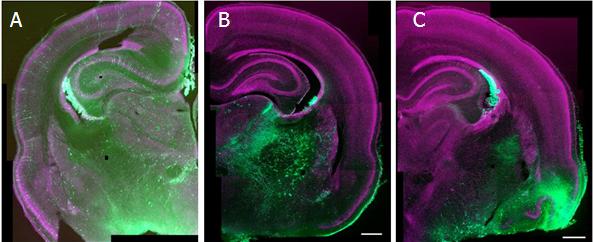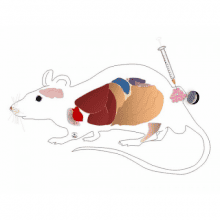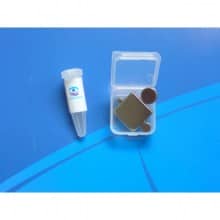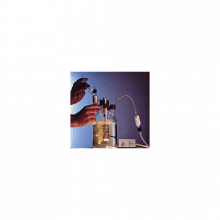In vivo ViroMag™ Transduction Reagent is an optimized nanoparticles formulation designed for in vivo targeted transduction with viral vectors. It is particularly suitable for Lentiviral/Retroviral, Adenoviral and Adeno-Associated Viral (AAV) vectors.
Targeted delivery minimizes systemic distribution, decreases gene vectors inactivation and reduces toxicity. The use of magnetic forces enhances the uptake of magnetic nanoparticles by the target tissue, improving the efficiency of transduction and decreasing the required process time of delivery to only a few minutes.
In vivo ViroMag™ can be easily administrated through both systemic administration, such as intravenous and intra-artery injection, and local administration, such as intratumoral, intracerebroventricular, intraperitoneal, intramuscular and subcutaneous injection.
This reagent must be used with a magnet. A starter kit including a magnet set is available.

Figure 1: High efficiency of in vivo ViroMag for targeting viral vector after intracerebroventricular injection. Third ventricles of in utero rat embryos were injected with GFP-encoding viral particles alone or complexed to in vivo ViroMag. Without magnetic nanoparticles (A), the virus-transduced cells are located on both sides of the ventricle. Using in vivo ViroMag (B), transduction is enhanced and confined to one side due to a 30s magnet-application.

Figure 2: Infection of rat embryo brain. Brain sections at 8 days after lateral ventricular injection of 109 particles of GFP-lentivirus coupled with in vivo ViroMag into in utero rat embryos (E16) showed a diffuse GFP expression (in green) due to a widespread infection of neurons (A). The association of GFP-lentivirus with ViroMag induced a targeted local area as shown by the GFP expression in neurons lying under a magnet at the surface of the embryo skull (B). A more intense and restricted GFP-expression (C) was also observed when the magnet was positioned on the edge of the brain leading to an accumulation of viral particles and infected neurons in the focal area.




 ViroMag Viral Gene Delivery Reagent
ViroMag Viral Gene Delivery Reagent In Vivo PolyMag Transfection Reagent
In Vivo PolyMag Transfection Reagent In Vivo DogtorMag Transfection Reagent
In Vivo DogtorMag Transfection Reagent In Vivo Magnet Set
In Vivo Magnet Set
